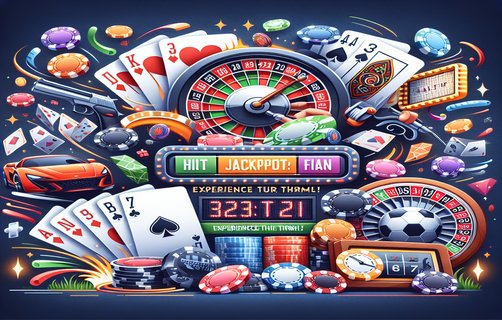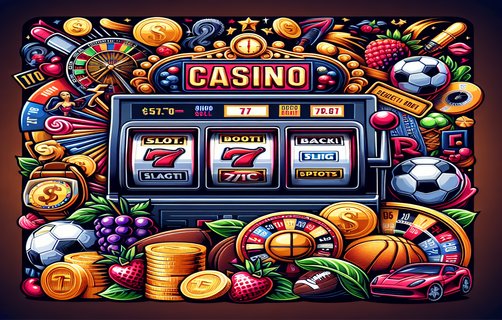Strategic Dynamics in Movement Squares: An Analytical Approach
गतिशीलता वर्गों में रणनीतिक गतिशीलताएँ: एक विश्लेषणात्मक दृष्टिकोण
In game design, particularly in strategy games, the concept of movement squares serves as a cornerstone for gameplay mechanics. They dictate how players traverse the game environment and interact with various elements. The strategic positioning within these squares can lead to significant advantages or setbacks, emphasizing the need for players to develop a sound understanding of spatial relationships. Each square can represent different terrains or obstacles, influencing the movement strategy a player might employ. Consequently, players must continuously evaluate their options to optimize their routes, thereby enhancing their chances of success.
The emperor figure in these games often symbolizes the decision-making authority, with implications for resource management and tactical advantages. Players taking on the role of the emperor must invest in strategic planning while managing their resources effectively. This dynamic can lead to a complex interplay between authority and resource constraints, forcing players to prioritize certain decisions over others. Balancing the emperor's power with the limitations posed by available resources becomes crucial for maintaining control and achieving victory.

Card luck factor introduces an element of chance, which can dramatically reshape the game landscape. While strategy plays a significant role, the unpredictability of card draws adds a level of excitement and tension to the gameplay. Players must navigate scenarios where their plans can be thwarted by an unfavorable card draw, necessitating adaptability and innovative thinking. This element of luck not only affects individual player experiences but can also influence overarching strategies within the game, prompting players to account for luck's potential impact when formulating their approaches.
Player limits often dictate the scope of engagement within the game. These limitations can come in various forms, such as the number of moves allowed per turn or restrictions on resource allocation. Understanding and navigating these limits can enhance a player's strategic depth, compelling them to make more meaningful choices. As moves are constrained, players are pushed to think critically about each decision, rendering the game a balancing act between ambition and caution.
Resource cubes and player tokens function as critical components that facilitate interactions and drive competition among players. Resource cubes often correlate with the game's economy, where acquiring and utilizing these cubes efficiently can lead to greater advantages. Meanwhile, player tokens might represent individual player identities or powers, playing a pivotal role in establishing unique strategies. Together, they create a multifaceted ecosystem where players must leverage their resources effectively while maintaining their unique identities, all of which contributes to a rich gameplay experience.
In conclusion, a comprehensive understanding of these elements enhances not only individual strategy but also collective gameplay within strategy games. The interrelationship among movement squares, the emperor figure, the card luck factor, player limits, resource cubes, and player tokens defines the game's ultimate dynamics, encouraging players to engage thoughtfully and purposefully in their decisions.

गेम डिज़ाइन में, विशेष रूप से रणनीति खेलों में, गतिशीलता वर्गों की अवधारणा गेमप्ले मैकेनिक्स के लिए एक मुख्य आधार के रूप में कार्य करती है। वे यह निर्धारित करते हैं कि खिलाड़ी गेम वातावरण में कैसे आगे बढ़ते हैं और विभिन्न तत्वों के साथ कैसे बातचीत करते हैं। इन वर्गों में रणनीतिक स्थिति महत्वपूर्ण लाभ या बाधाओं का कारण बन सकती है, जिससे खिलाड़ियों को स्थानिक संबंधों की समझ विकसित करने की आवश्यकता होती है। प्रत्येक वर्ग विभिन्न स्थलों या बाधाओं का प्रतिनिधित्व कर सकता है, जो कि एक खिलाड़ी द्वारा अपनाई जा सकने वाली गतिशीलता रणनीति को प्रभावित करता है। परिणामस्वरूप, खिलाड़ियों को अपने विकल्पों का लगातार मूल्यांकन करना होता है ताकि वे अपने रास्तों का इष्टतमकरण कर सकें, इस प्रकार उनकी सफलता की संभावनाओं को बढ़ावा मिलता है।
इन खेलों में सम्राट का स्वरूप अक्सर निर्णय-निर्माण प्राधिकरण का प्रतीक होता है, जिसमें संसाधन प्रबंधन और सामरिक लाभ के लिए निहितार्थ होते हैं। सम्राट की भूमिका निभाने वाले खिलाड़ियों को रणनीतिक योजना बनाने के साथ-साथ अपने संसाधनों का प्रभावी ढंग से प्रबंधन करना चाहिए। यह गतिशीलता एक जटिल अंतःक्रिया का कारण बन सकती है, जो कि प्राधिकार और उपलब्ध संसाधनों द्वारा लगाए गए प्रतिबंधों के बीच आवश्यक संतुलन स्थापित करती है, खिलाड़ियों को प्राथमिकता देने के लिए मजबूर करती है। नियंत्रण बनाए रखने और विजय प्राप्त करने के लिए सम्राट की शक्ति और संसाधनों की सीमाओं के बीच संतुलन बनाना महत्वपूर्ण हो जाता है।
कार्ड भाग्य कारक ने चांस के एक तत्व को जोड़ा है, जो खेल परिदृश्य को नाटकीय रूप से पुनः आकार दे सकता है। जबकि रणनीति महत्वपूर्ण भूमिका निभाती है, कार्ड ड्रॉ की अनिश्चितता खेल में रोमांच और तनाव का एक स्तर जोड़ती है। खिलाड़ी उन परिदृश्यों ने नेविगेट करना चाहिए जहां उनके योजनाओं को प्रतिकूल कार्ड ड्रॉ द्वारा विफल किया जा सकता है, जिससे अनुकूलनशीलता और नवीन सोच की आवश्यकता होती है। भाग्य का यह तत्व न केवल व्यक्तिगत खिलाड़ी अनुभवों को प्रभावित करता है, बल्कि खेल भीतर की समग्र रणनीतियों को भी प्रभावित कर सकता है, खिलाड़ियों को उनकी दृष्टिकोण के दौरान भाग्य के संभावित प्रभाव की गणना करने के लिए प्रोत्साहित करता है।
खिलाड़ी सीमाएं अक्सर खेल के भीतर सहभागिता के क्षेत्र को निर्धारित करती हैं। इन सीमाओं के कई रूप आ सकते हैं, जैसे प्रति मोड़ में अनुमति दी गई चालों की संख्या या संसाधन आवंटन पर प्रतिबंध। इन सीमाओं को समझना और नेविगेट करना खिलाड़ी की रणनीतिक गहराई को बढ़ा सकता है, जिससे उन्हें अधिक सार्थक विकल्प बनाने के लिए मजबूर किया जाता है। जैसे-जैसे चालें सीमित होती हैं, खिलाड़ी प्रत्येक निर्णय के बारे में अधिक महत्वपूर्ण रूप से सोचने के लिए मजबूर होते हैं, जिससे खेल महत्वाकांक्षा और सावधानी के बीच एक संतुलन बनाने का कार्य बन जाता है।
संसाधन घन और खिलाड़ी टोकन महत्वपूर्ण घटक के रूप में कार्य करते हैं जो इंटरैक्शन को सुगम बनाते हैं और खिलाड़ियों के बीच प्रतिस्पर्धा को बढ़ाते हैं। संसाधन घन अक्सर खेल की अर्थव्यवस्था के साथ सहसंबंधित होते हैं, जहां इन घनों को प्रभावी ढंग से अधिग्रहण और उपयोग करना बड़े लाभ की ओर ले जा सकता है। इस दौरान, खिलाड़ी टोकन शायद व्यक्तिगत खिलाड़ी की पहचान या शक्तियों का प्रतिनिधित्व करते हैं, जो अनूठी रणनीतियों के निर्माण में महत्वपूर्ण भूमिका निभाते हैं। मिलकर, वे एक जटिल पारिस्थितिकी तंत्र बनाते हैं जहां खिलाड़ियों को अपने संसाधनों को प्रभावपूर्वक लुभाना चाहिए जबकि अपनी अनोखी पहचानों को बनाए रखना चाहिए, जो एक समृद्ध गेमप्ले अनुभव में योगदान देता है।
निष्कर्ष में, इन तत्वों की समग्र समझ न केवल व्यक्तिगत रणनीति को बढ़ाती है, बल्कि रणनीति खेलों के भीतर सामूहिक गेमप्ले को भी बढ़ाती है। गतिशीलता वर्गों, सम्राट के स्वरूप, कार्ड भाग्य कारक, खिलाड़ी सीमाएँ, संसाधन घन, और खिलाड़ी टोकन के बीच अंतःक्रिया खेल के अंतिम गतिशीलता को परिभाषित करती है, खिलाड़ियों को संज्ञानात्मक और उद्देश्य के साथ अपने निर्णयों में संलग्न करने की अनुमति देती है।

comments
GamerGuru
This article brilliantly captures the essence of strategy games. The interplay between luck and strategy is fascinating!
CubeMaster
Never thought about movement squares this way. It adds so much depth to the game!
StrategyNinja
I appreciate how you highlighted the emperor's role in resource management. Very insightful!
TacticalThinker
The analysis of player limits really makes you reconsider your approach. Excellent read!
CardShark
Luck can break or make a strategy, and you explained it well! Thanks for sharing.
ResourceRanger
I found the section on resource cubes really enlightening. It's such a crucial part of gameplay!